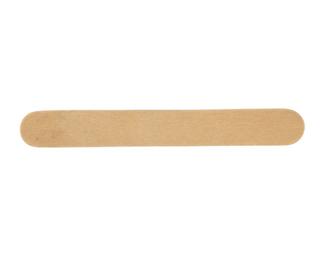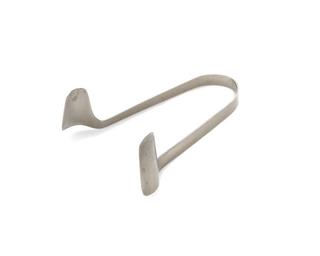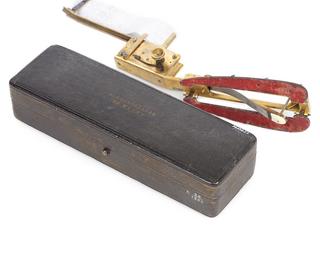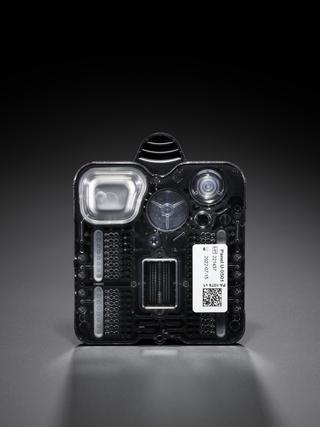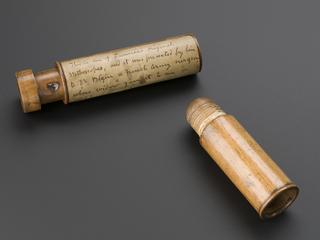



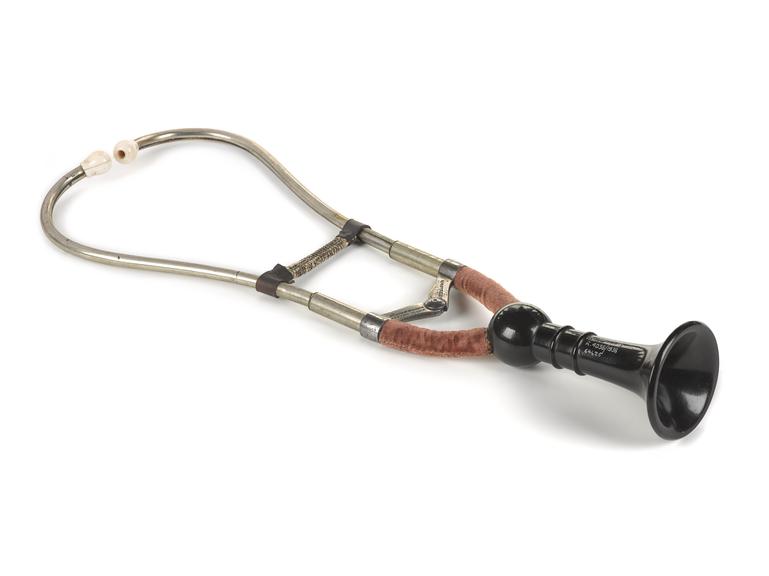


Cammann binaural stethoscope, presented by Cammann to Dr. Barth.
The stethoscope is used on the chest or another part of the body to listen to organs such as the heart or lungs. The sounds can help diagnose the patient’s problem.
In 1851, Dr Arthur Leard presented an example of a binaural stethoscope at the Great Exhibition in London. The ear pieces had flat discs and gutta percha connections. Unfortunately, no examples of his work survive. His design required two people to use to hold the earpieces in place, while the other placed the chest piece on the patient. Americian physician, Dr George P. Cammann is credited with popularising the stethoscope that is similar to one still used. The movable spring across the two metal arms of the stethoscope, keep the ear pieces in place. Ivory ends were placed in the ears to listen to chest sounds.
Before this date, physicians used a single tube stethoscope. The first were developed by French physician Rene Theophile Laennec (1781-1826) in 1816.
Details
- Category:
- Clinical Diagnosis
- Collection:
- Sir Henry Wellcome's Museum Collection
- Object Number:
- A64625
- Materials:
- complete, nickel silver (nickel, copper, zinc alloy), vulcanite, ivory, chromium (plated), velvet, leather and elastic
- Measurements:
-
overall: 38 mm x 345 mm x 128 mm, .12 kg
overall - small separate section: 54 mm 52 mm, .02 kg
overall - total weight: .14 kg
- type:
- stethoscope
- credit:
- Boulange

